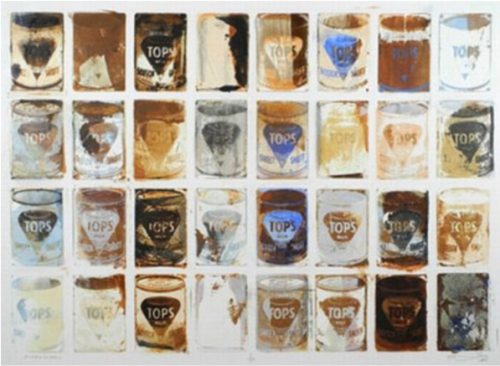
Hemphill Fine Arts is hosting “William Christenberry: Assembled Memory,” but the exhibit might as well be titled, "ChristenberryFest: A Career’s Worth of Tropes." The Alabama-born, Washington, D.C.-based chronicler of the Southern vernacular offers a grab bag of more than two dozen works, some of them brilliant, but all of them deeply imbued with the artist’s psychological musings.
Models of humble buildings covered in a layer of creamy white? Got ‘em. Ridiculously rusted road signs? Yep. Detailed images of KKK hoods? They’re here, too. Psychoanalysts will have a ball with the literal centerpiece of the exhibit, a large, somewhat coffin-shaped table that displays a cornucopia of Christenberrian talismans: gourds, small metal objects, stray tools, a honeycomb, twigs and, of course, a paintbrush.
One 1983 work offers an intriguing, blood-red hologram of KKK garb, but this high-tech approach is decidedly in the minority; as is often the case with Christenberry's work, some of his finest pieces are his simplest, including photographs that depict classic regional architecture (a humble building painted in unexpected hues of pink, yellow, and green, for instance) and images of painted wall advertisements that have faded, marking the passage of time. But the exhibit’s masterwork is a 1975 matrix of 32 rusted advertising signs for snuff—-a reverse Andy Warhol in which a standardized consumer image is morphed in appearance, only this time with changes created by natural forces rather than by the artist’s hand. This wall-spanning work is positioned to overlook the rest of the exhibit—-a perfect choice for highlighting such an impressive artistic effort.